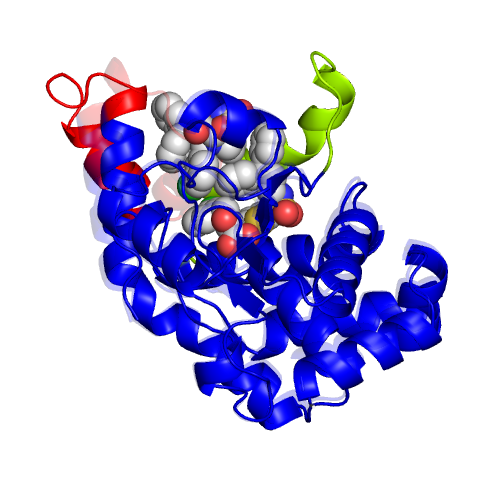CL.10 |
PHOSPHOTYROSINE PROTEIN PHOSPHATASE PTPB |
|
|
|
Ligand |
PDB*1 |
Full name |
2x7XY |
2x({(3-CHLOROBENZYL)[(5-{[(3,3-DIPHENYLPROPYL)AMINO]SULFOYL}-2-THIENYL)METHYL]AMINO}(OXO)ACETIC ACID) |
|
*1 Ligand name designated by the PDB identifiers. |
Segments |
Component No. |
Fixed*1 |
Moving*1 |
Motion type |
Ligand binding |
Coupled motion type |
1 |
D1(4B-81B,119B-208B,226B-276B) |
L2(82B-104B,117B-118B) |
Local |
Coupled |
Opening |
2 |
D1 |
L3(209B-225B) |
Local |
Coupled |
Opening |
|
*1 The location of the fixed and moving segments indicated by the residue number assigned in the ligand-bound form. The background color of characters indicates the corresponding segment in the structure. The colored segments not described in the Table are: 1) a part of component in which the motion is small (< 1.0 A), or, 2) a part of a protomer of homodimers, for which a corresponding part of the other protomer is shown in the Table. |
Displacement and disorder |
Component No. |
RMSD*1 |
Displacement*2 |
Disorder-order transition*3 |
Disorder residue*4 |
Helix-Coil*5 |
1 |
Yes |
+19 |
+17 |
||
2 |
10.8 |
|
*1 The root-mean-square displacement of a component of motion calculated for the domain motions. |
Linear response |
Component No. |
Correlation coefficient*1 |
1 |
0.41 |
2 |
0.08 |
|
*1 The correlation coefficient between the displacement vector predicted by the linear response theory and the one observed in the crystal structures. |

